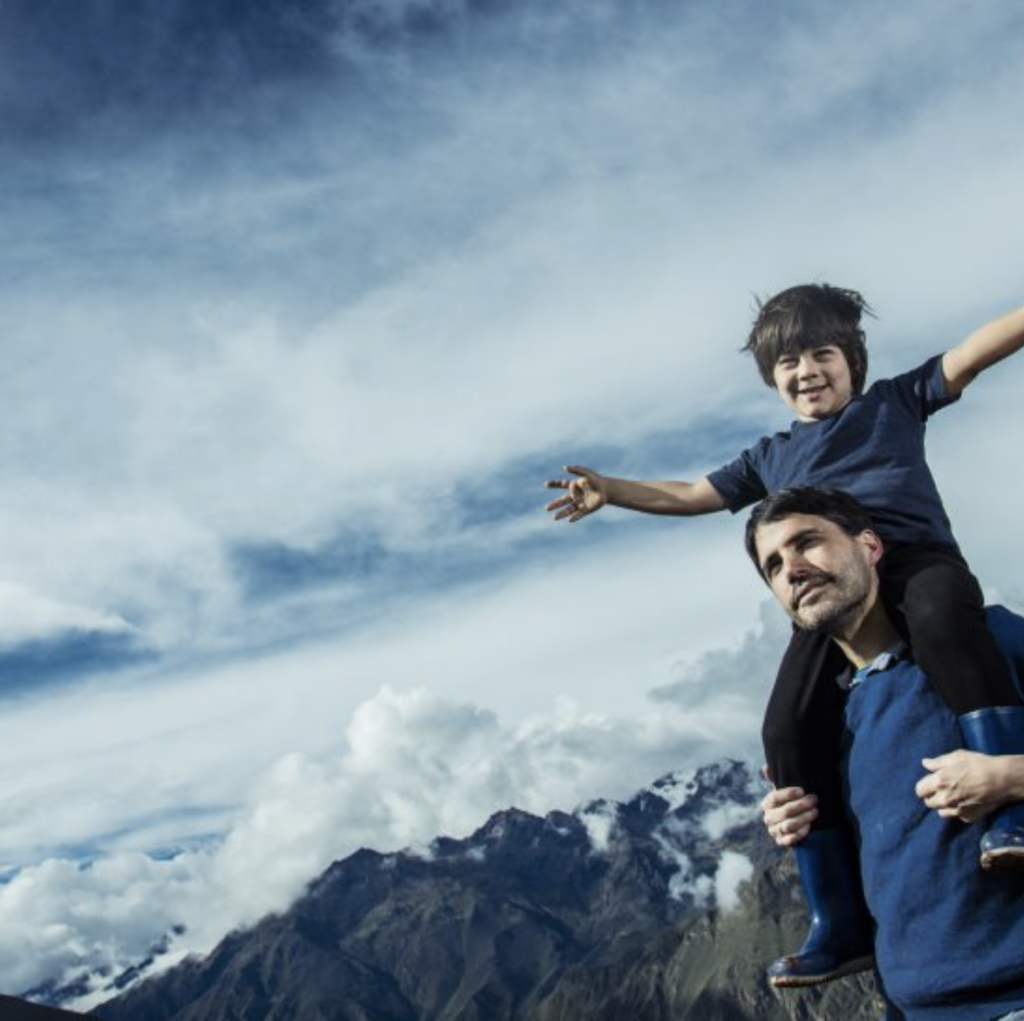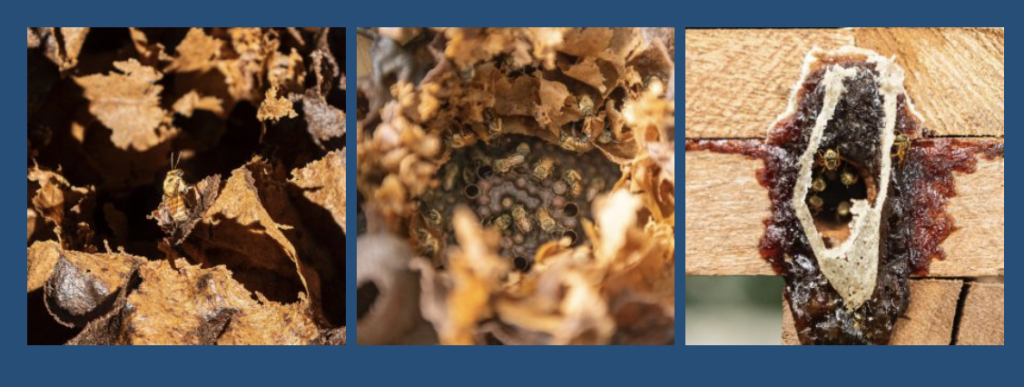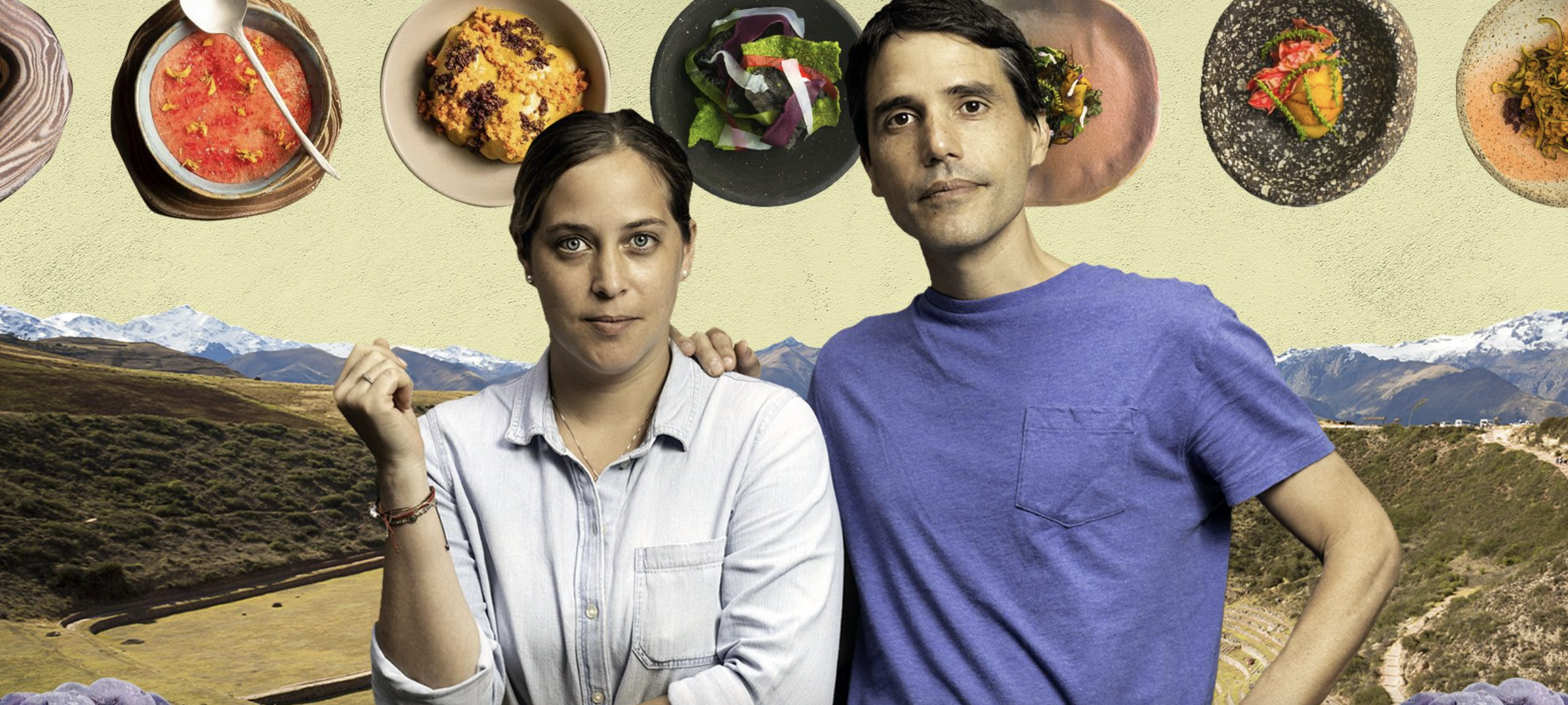(Topia, April 2022) With three establishments ranked in the top 100 of the World’s 50 Best Restaurants 2021, Peruvian chefs Pía León and Virgilio Martínez are unquestionably the culinary world’s most talented couple; chefs with vision who relish diverse agricultural experimentation with a long-term view.
While Virgilio changed Lima’s culinary game by focusing exclusively on Peruvian ingredients for his Mater ecosystems menu at Central – the restaurant where Pía soared through the ranks to become head chef that currently ranks fourth in the world – her talents also know no bounds. In 2021, the leader of Kjolle was named the world’s best female chef.
Together, they also helm MIL, a ground-breaking restaurant boasting incredible biodiversity whose altitudinous chacra (farm) is shared with two local Indigenous communities located at 3,600 metres above sea level next to Moray, in the Cusco region.

The restaurant’s research arm of MIL is run by Virgilio’s sister, Malena Martínez, who has a science background. She wanted to use her medical training as a physician to do something “more meaningful” and transcendent – an organisation that could really leave something for others to use.
It’s truly a family affair.
As for dining fine, ingredients are sourced from the heights and depths of Peru’s many elevations, developing tight-knit relationships with tiny homesteads and farmers.
With an extremely high regard for ingredients and working closely with Andean communities to create a positive impact, the couple wears their sustainability badge with pride, communicating precisely without being preachy. ‘There’s more out there’ – the curious and sustainable approach that drives forward their research and cultural investigation centre, Mater Iniciativa – is so effective that they are showing the Russians and the Japanese how to apply it by opening restaurants in Moscow and Tokyo with that same philosophy.
Mater Iniciativa is the epitome of ‘good’, a research centre and nonprofit that’s the backbone to the Martínez-León empire and traverses anthropology, the arts and agriculture.
One ongoing project at MIL works to strengthen seeds and improve native tuber varieties such as puca musca, huahua quepe and peruanita – normally shunned for more financially profitable floury white potatoes – the genetic results then shared among the communities to generate improved harvests, improving their nutritional values for the current and future generations.
Born and raised in Peru’s ocean-side capital, the star culinary couple is thrilled to raise their son in their home city. An energetic five-year-old who loves gardens and plants, Cristóbal is learning to skateboard with his dad (a semi-pro rider in a previous life).

In their first joint interview, the couple share a few thoughts on life in Lima What does Lima mean to you? Pía: I really love my city. Virgilio and I are both from Lima, growing up here. And we have both grown here. I adore the Andes and Amazon regions but I enjoy being on the coast; there’s great food, and while we’re close to the sea we’re also near the countryside. Virgilio: There’s a huge interaction between limeños, people from Lima, and the sea. Our gastronomy depends on it and eating cebiche is a key moment in our week, for example. The extensive Japanese and Chinese communities have also played their part in defining our gastronomy. Lima is a daytime city that has it all, bearing both Peruvian and Andean presences, so we tend to go out for breakfast or to markets. Pía: At 6am, there’s a lot of people out by El Malecón on their boards, surfing… Virgilio: It’s inspiring to see people doing that kind of activity so early. We’re a pretty sporty city, jogging, walking, cycling, surfing. What does it mean to you as a family, raising Cristóbal in the capital? Pía: The city is in my heart – I studied here all my life and my friends are here. People are kind and warm, with lots of good vibes. Pre-pandemic, it was very accessible for kids, for example, Barranco and Miraflores have lots of lovely green parks that are always being improved. With our son Cristóbal, we take advantage of those spaces, often cooking at home on Sundays then going out for coffee, for cebiche, in the afternoon. We make the most of them. Lima really lends itself to making fun plans and is adaptable for kids. And just 45 minutes away, the landscape changes so we can go horse riding in Pachacamac. Virgilio: Beyond the fact that this is ‘dangerous’ South America, this is a nice safe city inhabited by kind and hardworking people. Really, Lima should be more chaotic! It’s easy to enjoy Lima by foot, walking between restaurants, museums and galleries. My generation was raised to leave Peru because it was dangerous but today, young people want to construct a better Lima. There’s a sense of hope. Lots of young chefs come here to work and have a great standard of living. Now you are parents, do you think differently about food exploration? Virgilio: There are lots of interesting restaurants and markets and fortunately we aren’t invaded by big-name chains in Barranco, the neighbourhood we live in. Organic and farmers’ markets are a big deal and as they’re just two blocks away, our son can visit them at the weekend. Kids can see the origin of food, which is vital. What do you think about the future of the city? Virgilio: We like our traditions but transport needs to be improved. Planning worries me; how we can conserve the Lima we love with its lovely authentic districts that have a village feel to them? The Barranco neighbourhood retains its identity, and so do Pueblo Libre and Chorrillos, but our streets aren’t ready for more construction or transport chaos, and noise. That said, while the centre has lots of history there’s also a modern Lima, but to be honest, it isn’t that modern. What are you looking forward to in 2022? Pía: We are reopening MIL in the Cusco region, while the Olluco restaurant and experimentation centre in Moscow opened in November and MAZ Tokyo is very close to opening. We’ve been planning them for two years and of course everything is suddenly happening all at once. Virgilio: MAZ in Tokyo has been ready for a while. Our producers are ready, and the tasting menu for just 20 diners is done – it’s just been a question of waiting for the borders to open. At MAZ we will use Japanese ingredients but work with Central’s aesthetic with lots of nature running through dishes. We also just launched a small restaurant in a boutique hotel in Playa del Carmen in Mexico. That’s how we ended 2021, closing the year in the best way we could.

The couple share some of their favourite things, from honey and dairy treats, to ceramics that preserve the traditions of Peru 1 Artesanos Don Bosco – a virtuous crafty circle Virgilio: Artesanos Don Bosco atelier in Barranco works on different artisan projects with local communities from Cusco to Chimbote that institutions don’t reach. By focusing on different disciplines, they train people in skilled crafts from stonemasonry to clothing or carpentry, wood or fibres sourced from the jungle or the Andes; some of the tables at Central come from this workshop. Don Bosco is highly committed towards our social environment and geography, and preserving traditions. They have a lot of respect for people and the environment; they create a virtuous circle that doesn’t provide people with an income but also educates them. Pía: They have a clear objective because their workshops give hope. With six showrooms around the country, the Barranco-based store is really lovely and it’s important to consume what they do because the money goes to the right place. ➔ Enter the Artesanos Don Bosco showrooms to buy furniture, cushion covers and alpaca ponchos created by young artisans from around Peru. 2 Bioamaz – a beeline to creating sustainable jobs Pía: Bioamaz is a cooperative that rescues ecosystems, promotes the conservation of the natural resources of the jungle, mountains and coast of Peru, and the work that stems from developing production programmes. One in particular gathers honey from stingless bees. I especially like that women in Indigenous and rural communities collect this really special honey sourced from flowers and plants. ➔ Support Indigenous communities by visiting/buying from the Bioamaz cooperative and earn money with Bee Queen Coin. 3 Null Lab – ceramics lab exploring Peruvian colours and forms Virgilio: I work with several ceramicists based out of Barranco, artisans who use local clay and stones in their art. They undertake wonderful work, showing our Lima through their magic in colours and textures. A lot of dishware and ceramics used to be imported but today, Lima has an identity in this discipline and Null Lab run by Sergio Murga Rossel is one of those purveyors. Not only do we use their bowls and plates at Central, Kjolle and Mayo bar but we also sent Null pieces to Olluco in Moscow. ➔ Book an appointment with ceramicist Sergio at the Null Lab Barranco workshop for a pottery close-up or snap up wares at Dedalo art cafe at Jirón Sáenz Peña 295. 4 Sinba – advancing on Peru’s laughably low 5% recycling rate Virgilio: This recycling scheme for restaurants trains hospitality staff and those in other industries to separate and recognise waste, then complete the circle by feeding animals. Pía: We’ve worked with Sinba [short for sin basura or no waste] for around five years. I love the fact that they close that circle between training, classifying rubbish, and they’re great at keeping you up to date. It’s very well organised and keeps growing. They have helped us recognise waste and develop a new level of consciousness. ➔ Besides dining at Central and Kjolle, book a table at Isolina restaurant or Doomo Saltado or drop into La Baguette bakery and Flora & Fauna market, enterprises that also work with Sinba. 5 Valeria Figueroa – learn from clay hands The duo also adore the work of Peruvian plastic artist Valeria Figueroa, who runs Mater Iniciativa’s T’uru Maki workshop with women from the Mullaka’s-Mismanay Indigenous community. It is located close to MIL. Patient hands can take a pottery class with the ceramicist or simply make an appointment to visit the showroom at Jiron Daniel Hernández 631 in the Pueblo Libre district of the Lima Province. 6 Vacas Felices – happy cows Pía and Virgilio also respect Vacas Felices, where happy – rather than laughing – free-range cows’ merry hand-pumped milk becomes delightful dairy treats. Snap up butter enhanced with pink salt gathered by hand from the Maras pans near their restaurant MIL or Greek-style mango yoghurt from one of three Lima stores including the Barranco biobodega found at Jr. Colina 108.

What’s so good about this? We can all learn from the culinary duo’s family values and methods of working together with other locals, adopting ayni – a reciprocal way of sharing the workload across farmland in rural communities. As cooks, the pair feel responsible for making people more conscientious and know they can have a real impact on eating habits at home. “The ideal of working the land is being lost because young people from the communities are moving to the city to study or look for work,” adds Virgilio. “By working on their own products, improving them and realising their importance, work can be generated for a whole family.” As if you didn’t know already, it’s good to support local artisans.
